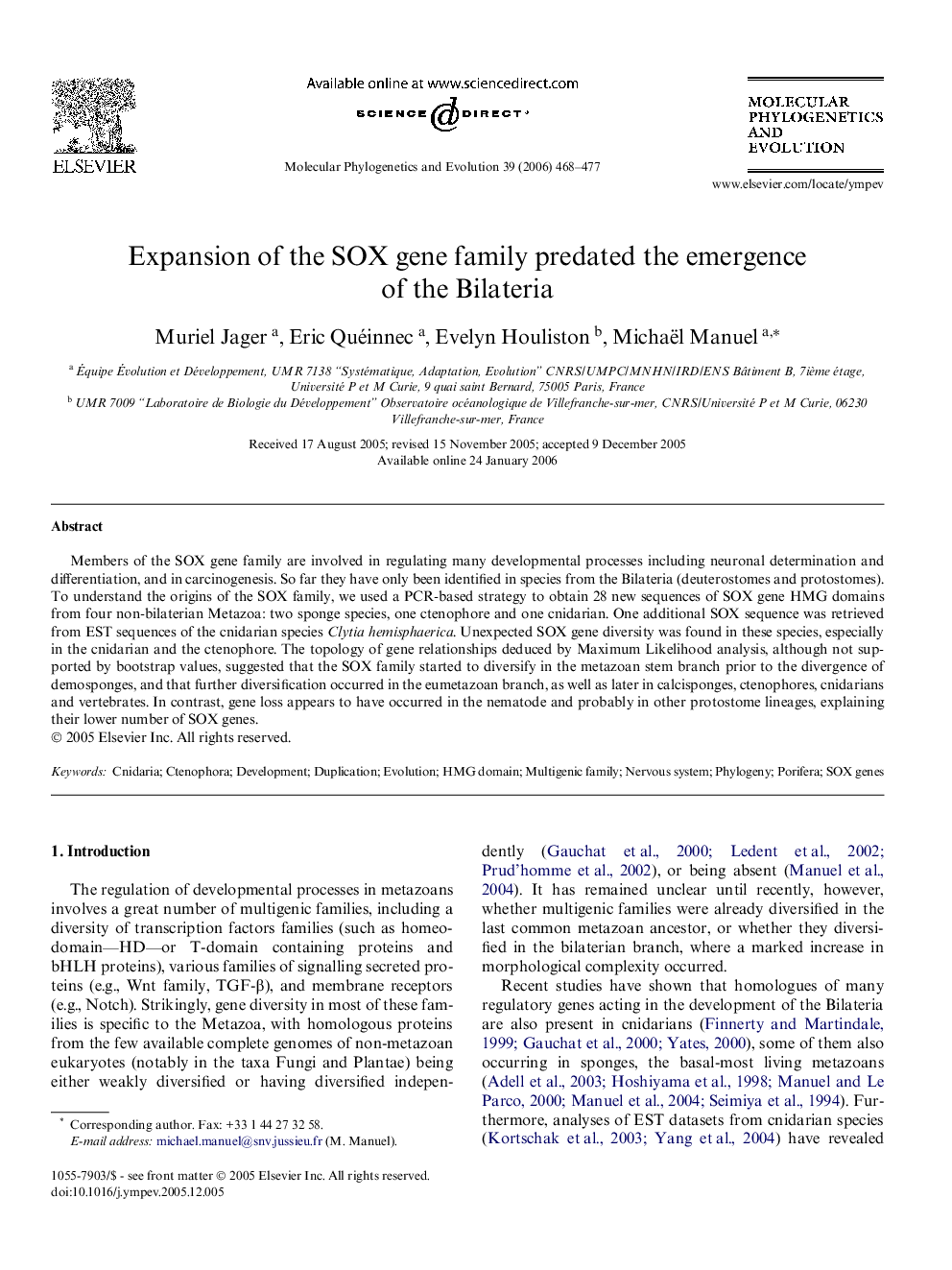| Article ID | Journal | Published Year | Pages | File Type |
|---|---|---|---|---|
| 2836037 | Molecular Phylogenetics and Evolution | 2006 | 10 Pages |
Members of the SOX gene family are involved in regulating many developmental processes including neuronal determination and differentiation, and in carcinogenesis. So far they have only been identified in species from the Bilateria (deuterostomes and protostomes). To understand the origins of the SOX family, we used a PCR-based strategy to obtain 28 new sequences of SOX gene HMG domains from four non-bilaterian Metazoa: two sponge species, one ctenophore and one cnidarian. One additional SOX sequence was retrieved from EST sequences of the cnidarian species Clytia hemisphaerica. Unexpected SOX gene diversity was found in these species, especially in the cnidarian and the ctenophore. The topology of gene relationships deduced by Maximum Likelihood analysis, although not supported by bootstrap values, suggested that the SOX family started to diversify in the metazoan stem branch prior to the divergence of demosponges, and that further diversification occurred in the eumetazoan branch, as well as later in calcisponges, ctenophores, cnidarians and vertebrates. In contrast, gene loss appears to have occurred in the nematode and probably in other protostome lineages, explaining their lower number of SOX genes.
